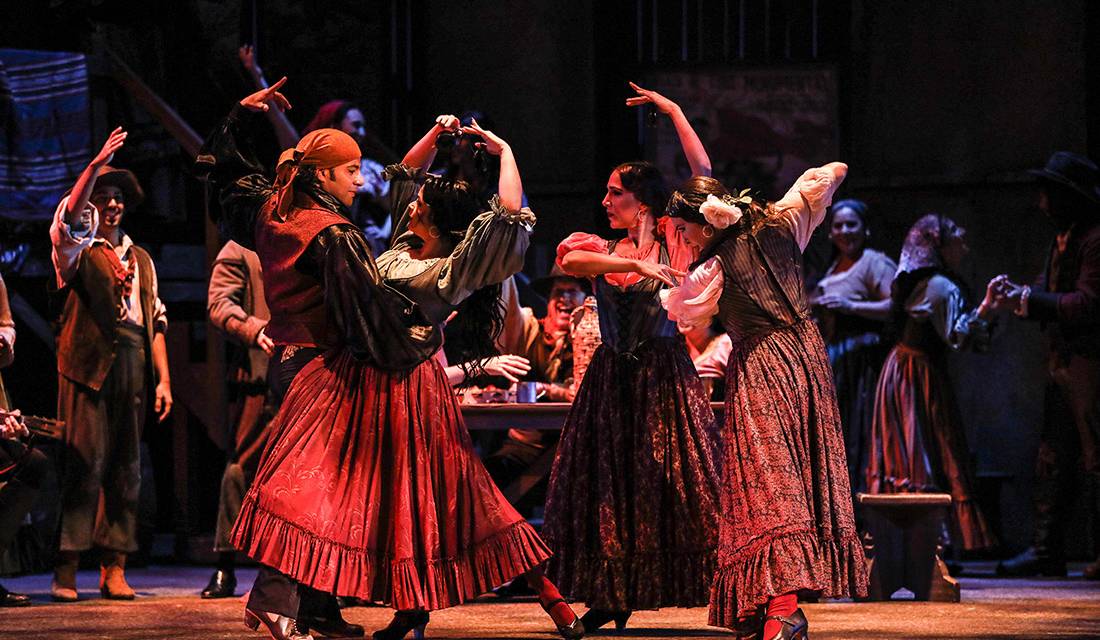Clothes maketh the man, as Shakespeare said, and there can be no doubt that costume is incredibly important when it comes to drama. From your favourite TV show to grand opera, the way dress is used helps set the scene, gives an insight into the character and can help make a part truly iconic.
A change in costume can indicate a transformation in a character – compare mild mannered Clark Kent’s grey suit and glasses to Superman’s brightly coloured red, white and blue Spandex. The combination of colours in the latter also mark out the character as the all-American hero, despite being from another planet. Conversely, some characters never change their clothes; their costume is part of who they are.
The colour of clothing plays an important part in establishing a character’s personality. One of the best examples of this in opera is Carmen (Bizet, 1875). Our titular heroine is always dressed in red – she is feisty, passionate and independent. She could almost be a feminist icon, except she is also a scarlet woman who sets out to seduce the poor hapless men in her life, and for this she must be punished. Red is also, after all, the colour of blood, and an indication of Carmen’s fate.
Clothing can indicate both social position and finances. The down-on-their-luck aristocrat dressed in a tasteful but threadbare outfit contrasts with a rich but crass businessman in his expensively fashionable but vulgar suit. And then there’s the hard-working peasant woman in her much repaired best dress. We can draw all manner of conclusions about the personalities and fates of such characters before they even sing a word simply by paying attention to what they’re wearing.
Costume isn’t just about psychological or social aspects, though. It also affects the physical – the way an actor can move or even sing. A tight corset might be right for the period, but if a soprano’s breathing is restricted will she be able to hit those high notes? The costume designer has to take this into account, balancing the need to create the right look with the requirements of the performers – as well as the expectations of the audience.
Movement and the way a performer holds themselves are also affected by their clothing. Think about the different ways a woman might sit or walk when wearing a full skirt with a bustle, compared to a simple long skirt or a mini-skirt. A male actor wearing a top hat will walk very differently from an unhatted companion, and this in turn will change the way the audience perceives the two characters. The former, for example, may be seen as more aristocratic. Is the latter a servant?
There is much more to any production than just words and movement, and costume design plays a huge part in establishing character and action. Try thinking about a character’s clothing and how it influences your opinion next time you’re watching an opera – we’d love to hear your thoughts.
Image
The use of red in costume design to demonstrate passion is clearly shown in the Flamenco dance from the Florida Grand Opera production of Bizet’s Carmen. Photo: Florida Grand Opera (CC BY 2.0), via Wikimedia Commons.

